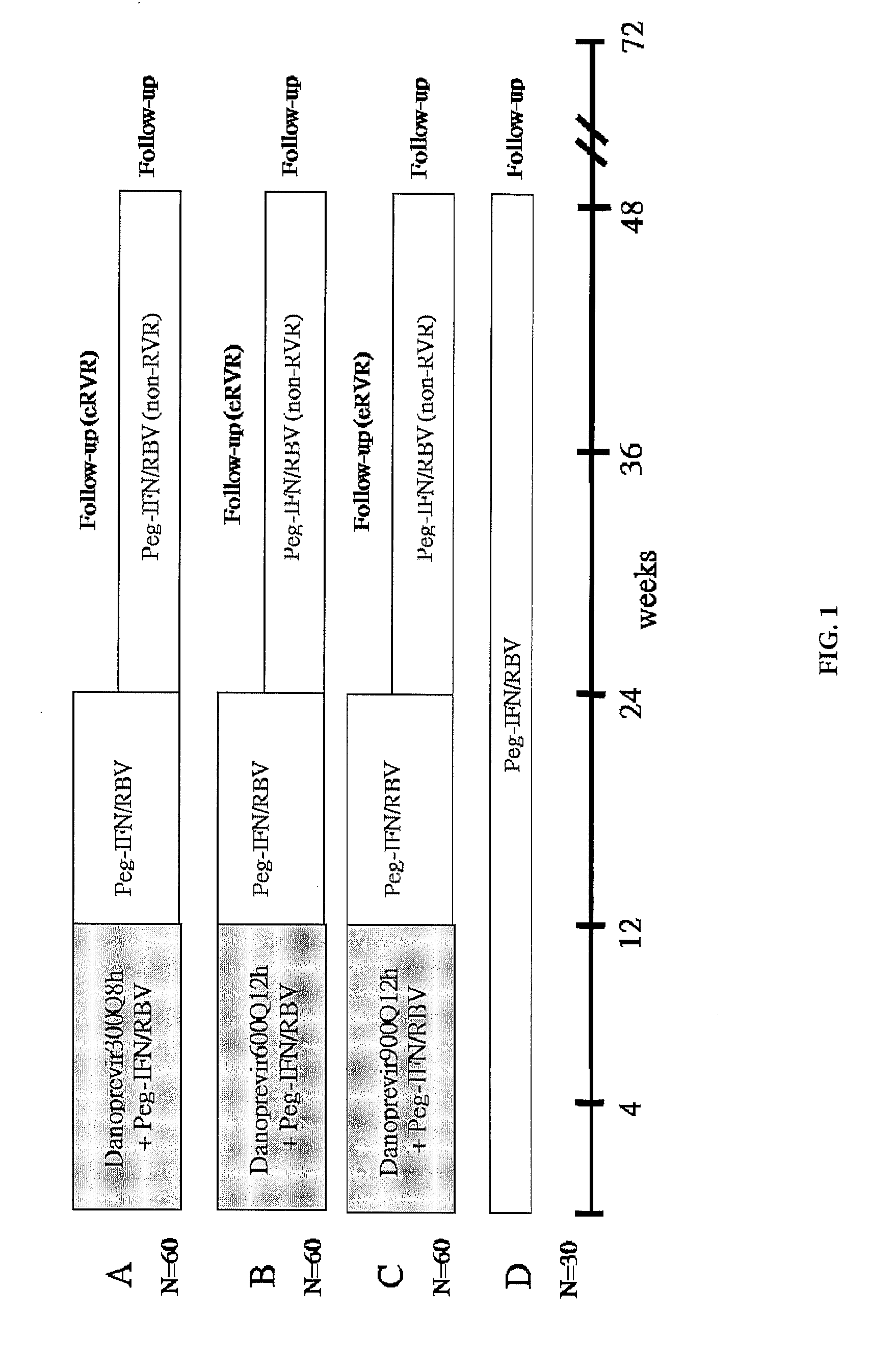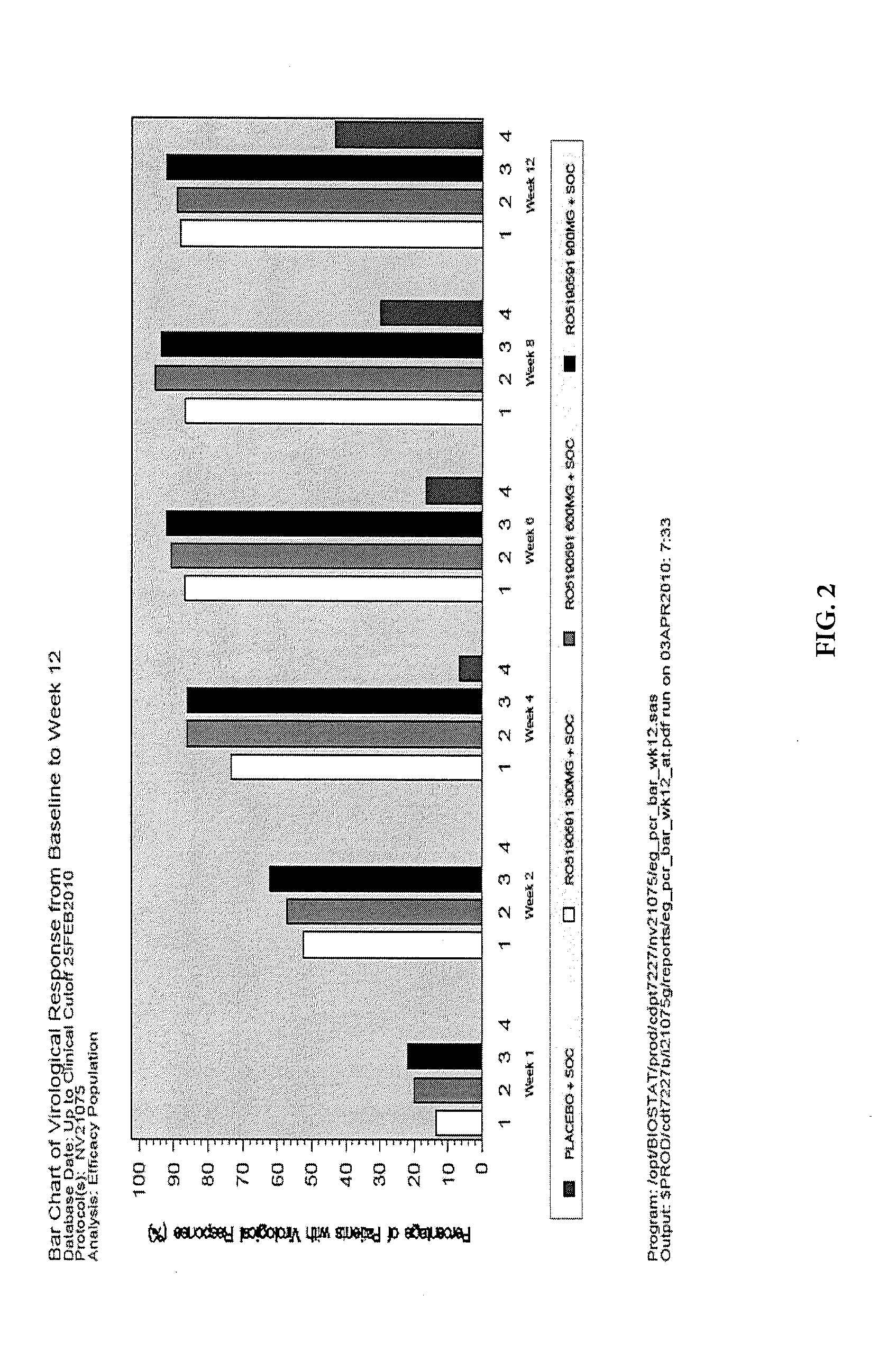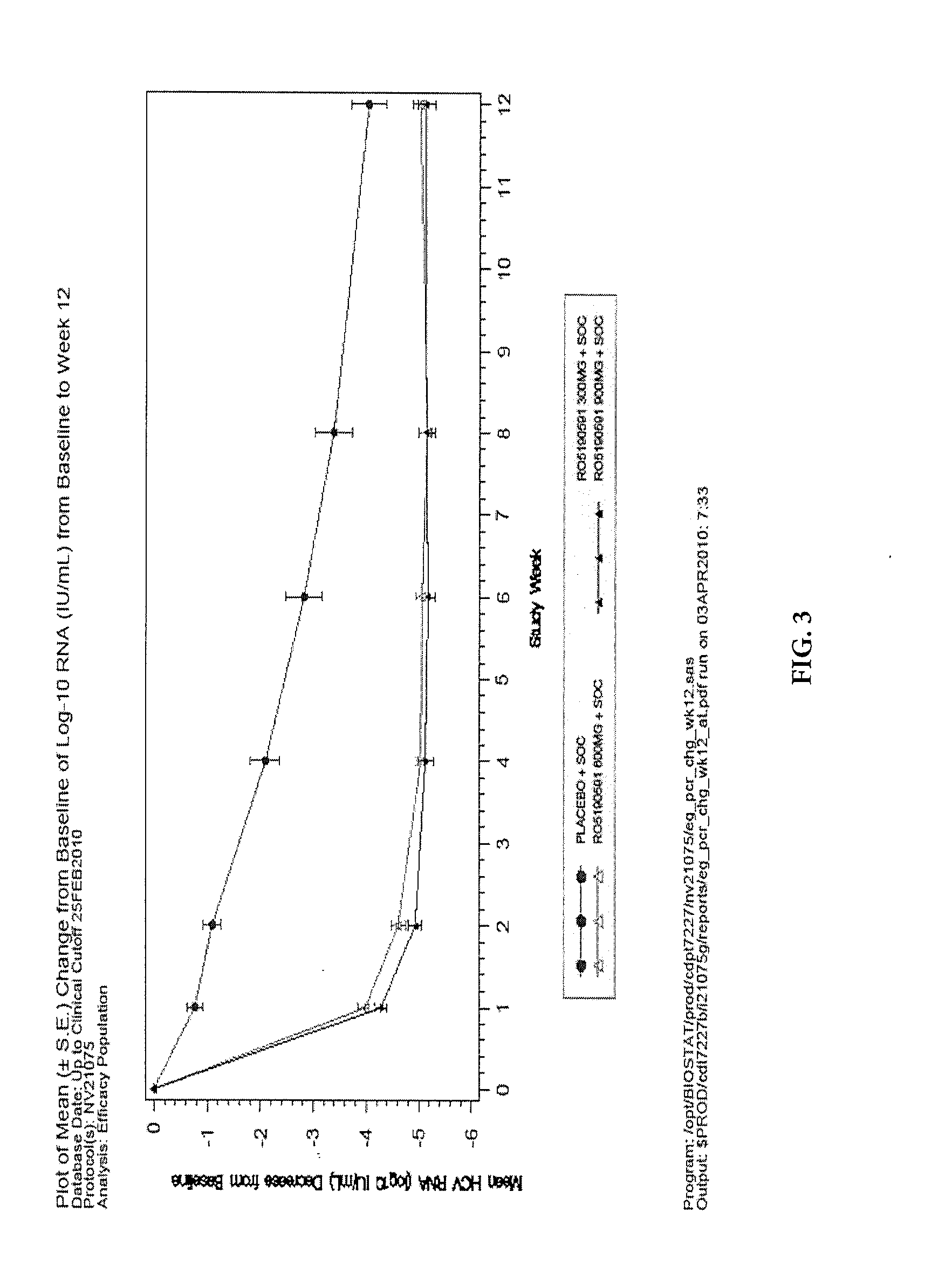Single Nucleotide Polymorphism on Chromosome 15 That Predicts HCV Treatment Responses
a single nucleotide polymorphism and chromosome 15 technology, applied in the field of single nucleotide polymorphism on chromosome 15 that predicts hcv treatment responses, can solve the problems of liver failure, hepatocellular carcinoma, and relapse in nearly all patients treated, and achieve the effect of increasing the likelihood of rvr2
- Summary
- Abstract
- Description
- Claims
- Application Information
AI Technical Summary
Benefits of technology
Problems solved by technology
Method used
Image
Examples
examples
Introduction
[0036]The HCV protease, encoded by the nonstructural gene 3 / 4A (NS3 / 4A), represents a clinically validated anti-HCV target and is essential for HCV polypeptide post-translational modification and viral replication. Danoprevir, also known as RO5190591, RG7227 or ITMN-191, is a macrocyclic peptidomimetic compound that competitively inhibits the HCV NS3 / 4A protease. Danoprevir was selected for development as an oral agent for the treatment of patients with chronic HCV (CHC) because of its high antiviral potency, specificity, and safety profile.
Study Design
[0037]Study NV21075 was a randomized double-blinded multicenter Phase 2 clinical study to evaluate the efficacy and safety of danoprevir in combination with peginterferon alfa 2a and ribavirin (triple therapy combination) when dosed for twelve weeks in treatment-naïve patients with chronic Hepatitis C genotype 1 infection as compared to the currently approved combination of peginterferon alfa 2a and ribavirin (Standard of ...
PUM
| Property | Measurement | Unit |
|---|---|---|
| Time | aaaaa | aaaaa |
| Magnetic field | aaaaa | aaaaa |
| Current | aaaaa | aaaaa |
Abstract
Description
Claims
Application Information
 Login to View More
Login to View More - R&D
- Intellectual Property
- Life Sciences
- Materials
- Tech Scout
- Unparalleled Data Quality
- Higher Quality Content
- 60% Fewer Hallucinations
Browse by: Latest US Patents, China's latest patents, Technical Efficacy Thesaurus, Application Domain, Technology Topic, Popular Technical Reports.
© 2025 PatSnap. All rights reserved.Legal|Privacy policy|Modern Slavery Act Transparency Statement|Sitemap|About US| Contact US: help@patsnap.com



